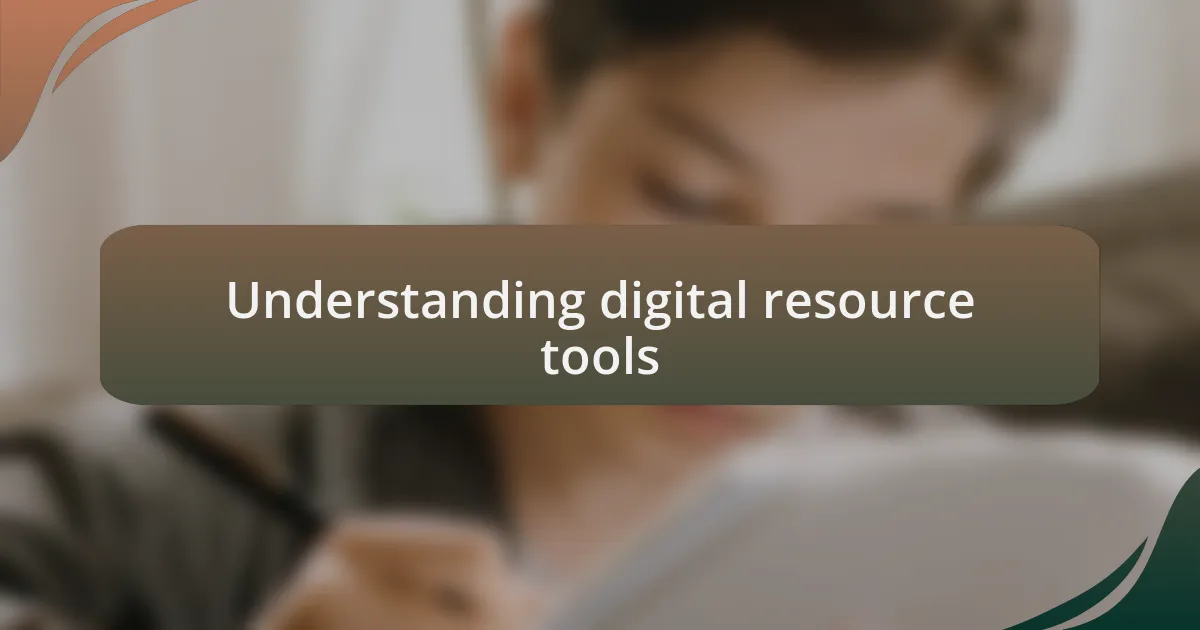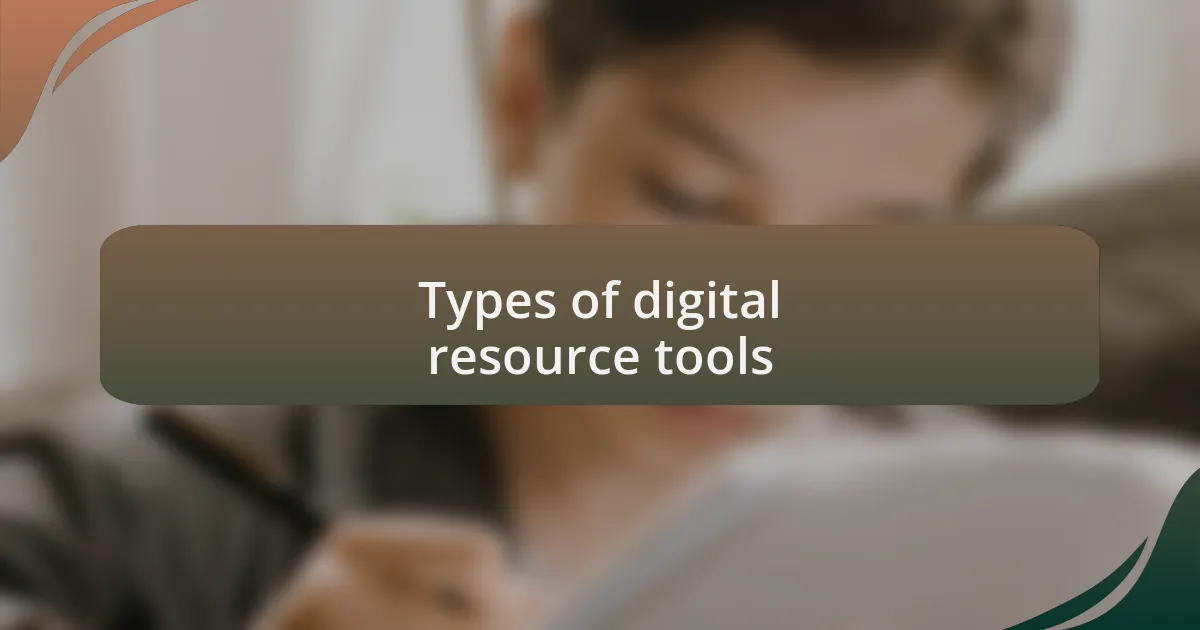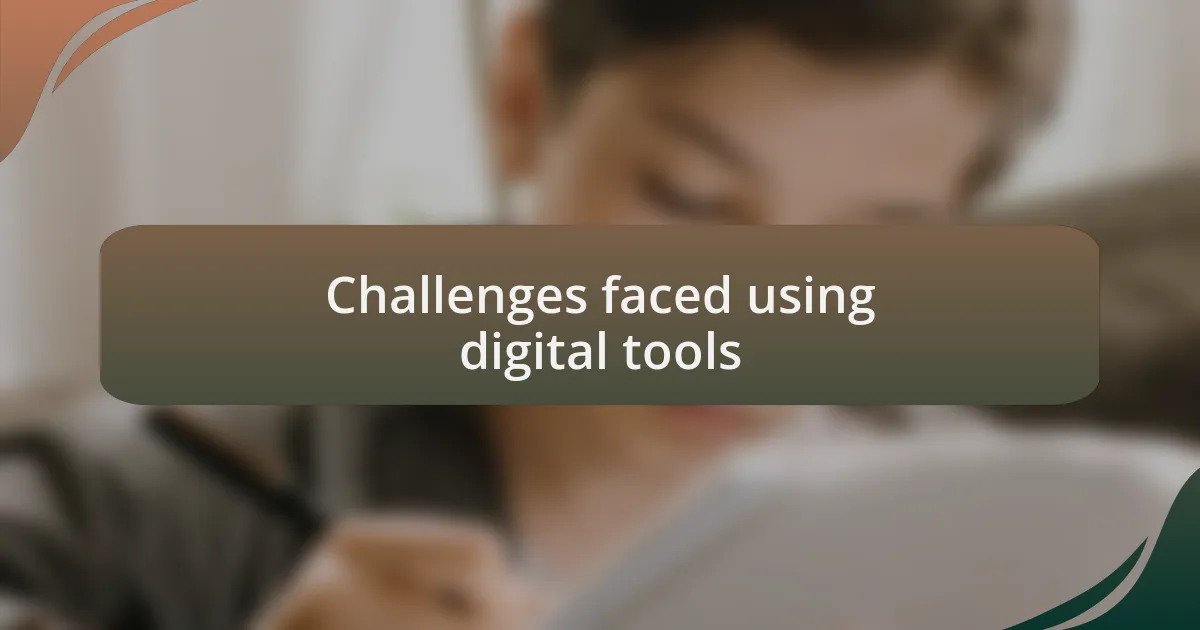Key takeaways:
- Digital resource tools significantly enhance music education by providing accessible and customizable learning experiences.
- Interactive notation software, online learning platforms, and collaborative tools foster creativity and teamwork among students.
- Challenges include technical difficulties, the digital divide affecting access, and the overwhelming amount of information available online.
- Educators need to address these challenges to ensure all students can effectively navigate and benefit from digital resources.

Understanding digital resource tools
Digital resource tools in music education are game-changers, transforming how we engage with music. I remember the first time I explored a digital sheet music app; it felt like opening a treasure chest. I could access countless scores, organized neatly and easily. Have you ever experienced that thrill of discovering a new piece, not having to rummage through a bulky binder?
These tools often come packed with features that aid in practice and learning. For instance, I found a metronome app that didn’t just tick at a regular speed but also allowed me to input my own tempo and track my progress over time. How empowering is it to have that level of customization at your fingertips? It’s like having a personal trainer, focusing solely on helping you develop your skills.
What often strikes me is the accessibility these digital resources provide. When I was teaching students, many would come from diverse backgrounds, some unable to afford traditional materials. Digital tools leveled the playing field; everyone had access to the same resources. This equal opportunity to learn and express oneself through music is something that deeply resonates with me. Have you ever witnessed a student’s eyes light up when they discover they can learn online at their own pace? It’s moments like these that highlight the importance of integrating technology in music education.

Types of digital resource tools
When exploring digital resource tools, I’ve come across various types that cater to different aspects of music education. For example, I found interactive notation software invaluable for teaching composition. It allows students to visualize their musical ideas right away, turning abstract concepts into something tangible. Have you ever watched a young composer light up as they see their notes transform into a full score? It’s truly inspiring.
Another type I’ve enjoyed is the collection of online learning platforms. These platforms often provide video tutorials, courses, and masterclasses from renowned musicians. Just imagine the excitement of learning guitar techniques from a professional artist while sitting in your living room! In my experience, these resources not only deepen understanding but also spark passion, making students eager to practice and perform.
Finally, let’s not forget about collaborative tools, which foster creativity and teamwork. A few months ago, I set up a virtual jam session using cloud-based software. Students from different locations teamed up, sharing their musical contributions in real-time. This experience taught me the power of collaboration in music; it’s fascinating how technology can enhance connection and creativity. Isn’t it incredible how digital resources can bring musicians together, regardless of distance?

Challenges faced using digital tools
Even with the benefits digital tools bring, I’ve faced significant challenges in their implementation. I remember one particular instance when a software update caused technical glitches right before a group lesson. While I had planned an engaging session, the frustration of dealing with unexpected issues left both me and my students feeling disheartened. Have you ever had a lesson go awry due to tech troubles? It can be so discouraging.
Another challenge I’ve encountered is the digital divide among students. Some come to class well-equipped with devices and reliable internet, while others struggle to access these essential tools. I recall a student passionate about learning the violin who often missed out due to limited connectivity at home. It’s heartbreaking to see enthusiasm dimmed by barriers that shouldn’t exist in today’s learning environment.
Lastly, I often grapple with the overload of information available through these digital platforms. With countless resources online, it can be overwhelming for students to navigate what’s truly beneficial. There was a point when a student confided in me that they felt lost amid so many options, unsure of where to focus their efforts. How can we curate their experience to ensure they thrive without feeling overwhelmed? It’s a critical question that requires our attention as educators.